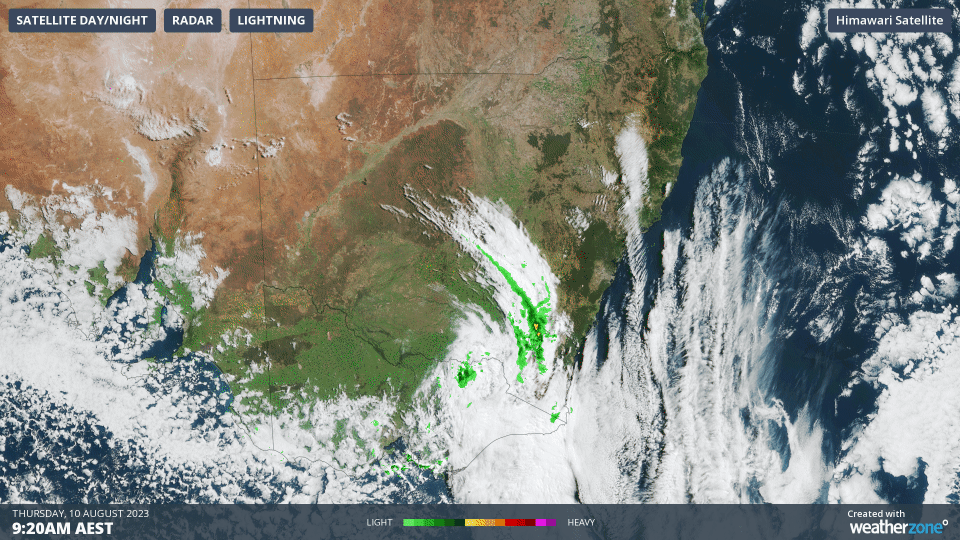It’s been a while, but heavy snow has fallen in the alpine regions of New South Wales and Victoria in Australia.
The not-so-great news is that Tuesday’s flakes appear to have been a relatively quick burst. But some snow is better than no snow after an almost totally snowless midwinter spell from early July to early August – with rain and unseasonably warm temps thrown into the mix.
This is what the Perisher snow stake looked like at 12:30 pm Thursday. As you can see, there’s around 10 cm of accumulated snow.

Image: That’s our favourite kind of stake for lunch. Source: ski.com.au.
Below is a three-hour loop showing what the cloudband associated with the cold front looked like as it crossed the alpine region on Thursday morning.
As you can see, the main band of moisture was pretty narrow and short-lived. Perisher received 5.8 mm of precipitation in its official weather station between 9 am and 12:30 pm, which generally translates to roughly the same amount of snow in centimetres, or sometimes a little more when the snow is wettish Aussie “cement”.

You can also see cold air pushing northwards from Bass Strait on the loop above, and that should generate a few more snow showers throughout the day, especially at the southernmost Victorian resorts Mt Buller and Mt Baw Baw where snow is desperately needed.
So Thursday’s snowfall is far from a game changer in terms of repairing the damage of the last month of weather, which dramatically reduced the snowpack and the amount of water running off into the hydro dams.
For more information on Weatherzone’s snow and hydro forecasts, please contact us at apac.sales@dtn.com.






